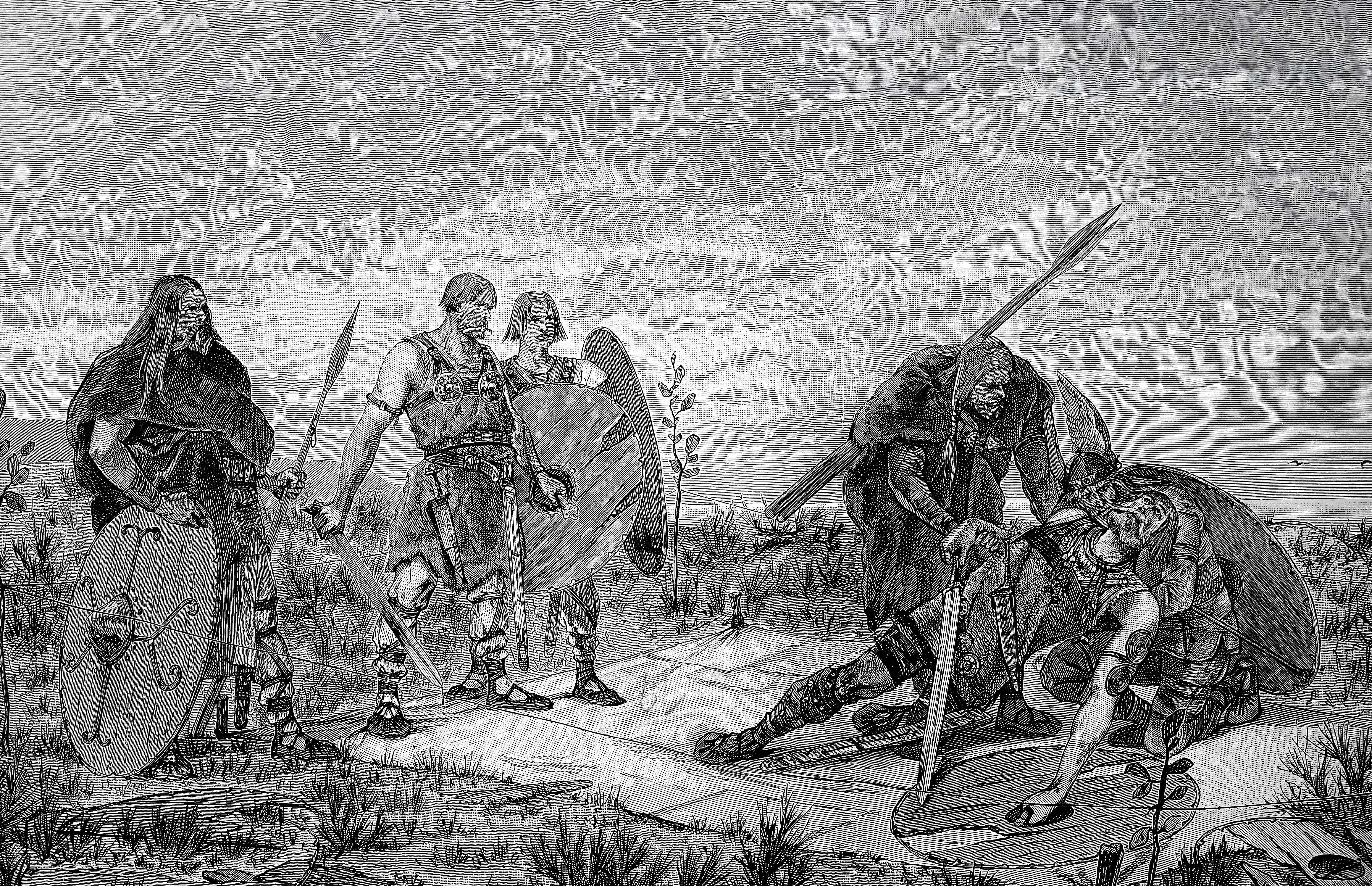
Berserkers such as Ljot the Pale became rich by challenging weaker farmers for their lands in a type of duel known as hólmgang
© Getty 67
The Viking berserker is a figure caught between myth and reality. However, the enduring image of a howling madman, uncontrollable and reckless is unlikely to have actually existed. Instead, a warrior-class of skilled fighting men denoted the real Viking berserkers and there are many different accounts of these shield-biting warriors. Chosen men of the king’s warband, trouble-making duelists, outlaws and traumatised veterans - these were the real berserkers. Though frenzied and fearless, they were not out of control, but skilled warriors who evoked ‘berserksgangr’, to strengthen themselves and frighten their foes.
The bellowing and shield-biting were deliberately provocative acts, evoked only before the battle began. As with the ancient Romans, the collective effort of the cohorts, or ‘fylkinger’ (‘battle formations’) described in the 13th century saga the Heimskringla or The Chronicle of the Kings of Norway, was emphasised. One warrior’s valour was always important, but having uncontrollable men running about the battlefield would not help you win a war. The berserkers evoked the berserksgangr to frighten their enemies. In Grettir’s Saga, a 14th century Icelandic narrative, we read of Snækollr, a berserker who sat atop his horse, biting his shield and howling before battle. Because he was only preparing for battle, Grettir caught him by surprise, attacking before he was ready.
Much like the All Blacks (New Zealand’s rugby team) who perform a haka, or Maori dance, at the start of a rugby match, berserkers taunted their foes. The famed berserker-frenzy was probably a method of preparing for battle, instilling confidence and aggression in those who displayed it. Dr Roderick Dale, an archeologist and leading scholar of Viking berserkers, has argued that the berserker-frenzy was just a means to prepare for battle. As modern athletes prepare for their events, this ritual was meant to strengthen the warrior and demoralise his enemies.
“THOUGH FRENZIED AND FEARLESS, THEY WERE NOT OUT OF CONTROL, BUT SKILLED WARRIORS WHO EVOKED ‘BERSERKSGANGR’, TO STRENGTHEN THEMSELVES AND FRIGHTEN THEIR FOES”